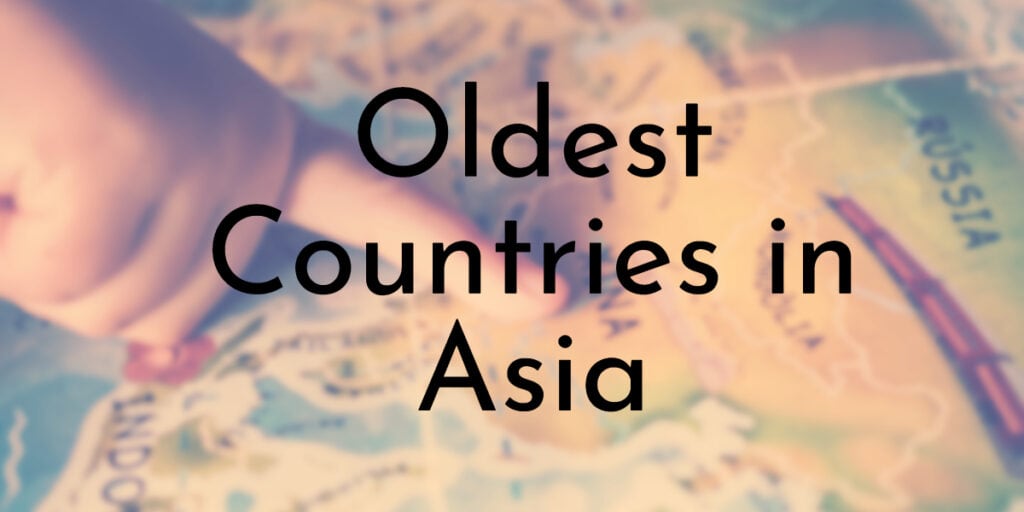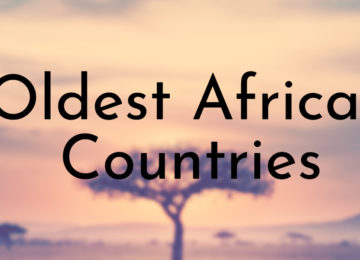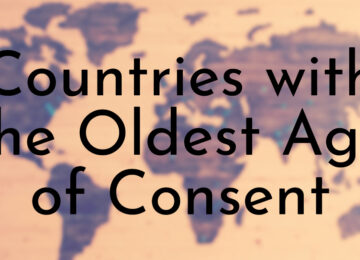Asia is the land of some of the oldest civilizations. During its rich long history, several nations were born. Some of them existed for centuries, and some disappeared.
It is often difficult to determine the age of a country due to several complexities involved. Moreover, the task becomes even more challenging for the ancient nations. So, when we talk about the oldest countries, we need to set a criterion to determine what qualifies as a country.
Here, we gathered 8 of the oldest countries in Asia. This list is created based on the time of the earliest known organized government. The list may look quite different if we consider the dates of gaining independence and sovereignty.
8. Afghanistan
Year founded: 1200 BCE
Capital city: Kabul
Current estimated population (as of 2023): 41,740,612

Afghanistan is one of the oldest countries in Asia. The country’s history dates back to the Gandhara Kingdom, which was established around 1200 BCE.
By the 6th century BCE, Gandhara emerged as an important imperial power in northwest South Asia. Later in that century, the region was conquered by the founder of the Achaemenid Empire, Cyrus II, who annexed the region into his empire.
During the following centuries, Afghanistan was invaded by many imperial powers and empires, including Alexander the Great, Kushans, and Mauryas.
Monarchy in Afghanistan ended in 1973 when Mohammad Sardar Daoud Khan came into power via a non-violent coup.
Did you know?
Several ancient historical sites are located in Afghanistan. It includes the ruin of Balk, one of the oldest continuously inhabited cities in the world.
7. Israel
Year founded: 1300 BCE
Capital city: Tel Aviv
Current estimated population (as of 2023): 9,113,635

The history of ancient Israel, as described in the Bible, begins with Israelites migrating to the region around 1300 BCE. According to the Bible, the descendants of Abraham migrated to the Promised Land, the region of present-day Israel and Palestine, after their exodus from Egypt.
After settling in this region, Israelites formed a loose confederation of tribes, ruled by judges and later by kings. The first king was Saul, followed by David, who established the United Kingdom of Israel around 1000 BCE.
Did you know?
Israel is the only country in the world with mandatory military service for both men and women.
6. India
Year founded: 2000 BCE
Capital city: New Delhi
Current estimated population (as of 2023): 1,422,772,034

The timeline for India’s emergence as a country is still a matter of debate among historians. However, it is ascertained by scholars that the Indus Valley Civilization began to flourish in this region as early as 3300 BC.
It was a highly sophisticated urbanized civilization centered around cities such as Harappa and Mahejodaro. This civilization was the most extensive among the three most ancient civilizations.
By the beginning of the second millennium BCE India began to function as a self-contained political and cultural region with a distinctive tradition. However, the writing system developed during this period is yet to be deciphered. It means we still don’t know much about its religion, language, and administrative system.
Did you know?
In January 2023, India surpassed China and became the world’s most populous country, with more than 1.42 billion population.
5. China
Year founded: 2070 BCE
Capital city: Beijing
Current estimated population (as of 2023): 1,425,829,194

China is the second-largest economy in the world. It is also home to one of the four ancient civilizations. Ancient historical records, including the Book of Documents, Bamboo Annals, and the Records of the Grand Historian, suggest that the first organized government in China was formed in 2070 BCE by the Xia dynasty.
However, many western scholars believe the Xia dynasty is a mythical concept and that the history of China began with the Shang dynasty in 1250 BCE. Their claim is based on the fact that no writings have ever been found from that period, and writings from the Shang era do not mention the existence of Xia.
Some other scholars think that the evidence collected during the excavation in Henan support that China had an organized government before the Shang dynasty.
Did you know?
China was the first country to use paper currency. Paper money has been in use in China since the 7th century.
4. North Korea
Year founded: 2333 BCE
Capital city: Pyongyang (North Korea)
Current estimated population (as of 2023): 26,121,697
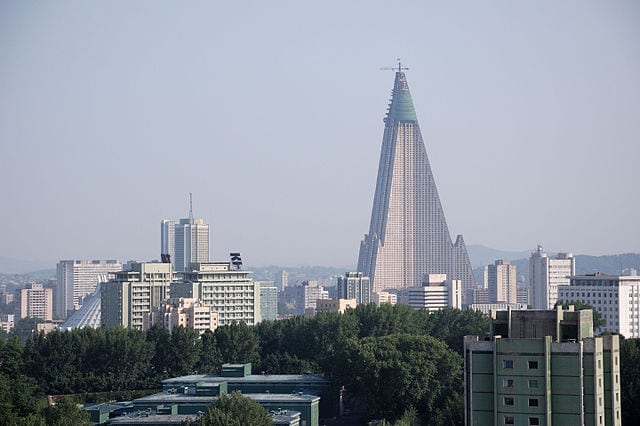
Korean Peninsula was first settled by tribes of nomadic hunters and gatherers around 30,000 BCE. According to the legends in the Samguk Yusa, the first kingdom on the Korean Peninsula was established in 2333 BCE. This Gojoseon Kingdom, founded by Dangun, included northern Korea and southern Manchuria.
By the 1st century BCE, Korea was divided into three kingdoms, Goguryeo, Baekje, and Silla, each competing for control of the peninsula. Finally, Silla defeated the other two forces and established the unified Silla Dynasty in 676 CE.
In the following centuries, two key forces that ruled Korea were Goryeo Dynasty (918-1392) and Joseon Dynasty (1392-1897). Finally, in the late 19th Korea was annexed by Japan and remained under Japanese rule until the end of World War II in 1945.
After the war, the peninsula was divided into North and South, with the North becoming a communist state under Soviet influence and the South becoming a democracy supported by the United States.
Did you know?
Korea has a strong drinking culture. The official statistics released by the South Korean government showed Koreans consume more alcohol than their staple food, rice.
3. Armenia
Year founded: 2492 BCE
Capital city: Yerevan
Current estimated population (as of 2023): 2,777,742
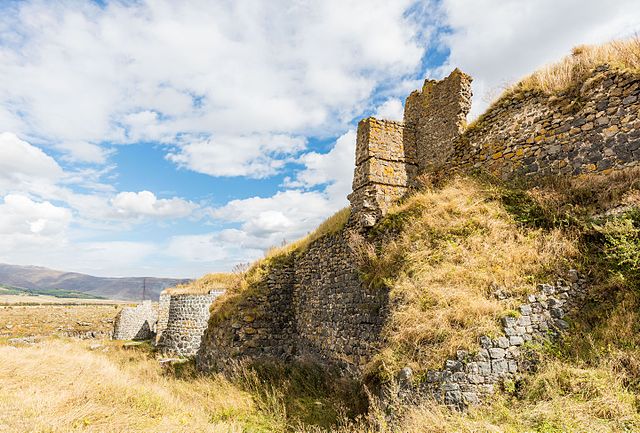
According to the History of Armenia, an early account of Armenia by Movses Khorenatsi, the Armenian nation was founded in 2492 BCE. It says that on August 11 of that year, the patriarch Hayk defeated and killed the Babylonian tyrant, Bel, and established the first Armenian nation, a claim later supported by genetic studies.
The day marks the beginning of the Haikian calendar or Armenian Proper Calendar.
Initially, the country was named Hyak and later Hayastan (in English, the land of Hyak). The name Armenia was derived from Armenak or Aram, the great-grandson of Haik’s great-grandson.
Like all other old nations, Armenia has a long and complex history. The Armenian kingdom was established in the 6th century BCE, and the country has been ruled by various empires and dynasties throughout its history, including the Roman, Byzantine, and Ottoman empires.
In 1991, Armenia declared its independence from the Soviet Union and became a republic.
Did you know?
In the early 20th century, the Armenian people were subject to genocide committed by the Ottoman Empire. It killed over 1.5 million Armenians, and many others left the country.
2. Vietnam
Year founded: 2879 BCE
Capital city: Hanoi
Current estimated population (as of 2023): 98,568,422

Vietnam was home to some of the earliest civilizations. Vietnam as a state emerged in 2879 BCE when the tribal chief Hung Vuong united the tribes and brought them under the rule of the Hồng Bàng dynasty. He became the first Hung King and founded the state of Xích Quỷ.
Hung kings dominated the region until the 3rd century BCE. Then, in 258 BCE, the eighteenth dynasty of Hung kings was overthrown, and a new kingdom was established.
In 111 BCE, the Han dynasty from China invaded the region and made it a part of the Chinese Empire. Several waves of Chinese domination continued for over 1000 years before Vietnam gained independence in 938 CE.
Did you know?
According to the Happy Planet Index, Vietnam is the 5th happiest country in the world.
1. Iran
Year founded: 3200 BCE
Capital city: Tehran
Current estimated population (as of 2023): 88,881,575

Iran is not only the oldest country in Asia but is also the oldest in the world. The history of Iran as a country can be traced back to 3200 BCE, the time of the Elamite civilization in the Iranian Plateau. Around that time, the first great city of the country, Susa, was built on the central plateau.
The Iranians (Aryans) began to arrive in this region in the second millennium BCE. It forced the Elamites to leave their earlier settlements and take refuge in Elam and the surrounding area.
Some historians opine that the history of the Iranian nation didn’t begin until 559 BCE when Cyrus II established the first Persian Empire. Consequently, many empires and political power ruled the region.
In 1979, Iranian Revolution ended the monarchy and established the present-day Islamic Republic of Iran.
Did you know?
Before 1935, Iran was officially known as Persia. However, the people of this region have long been using the name Iran — the land of Aryans.


